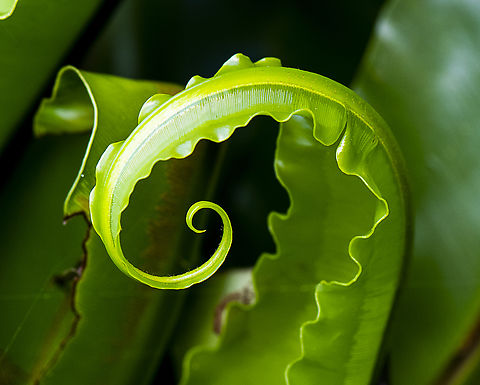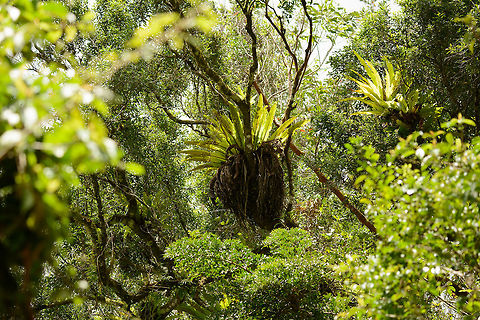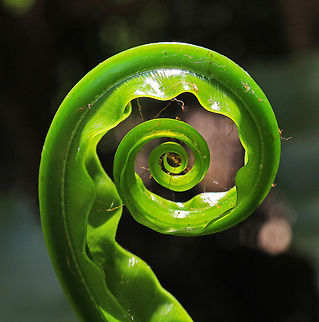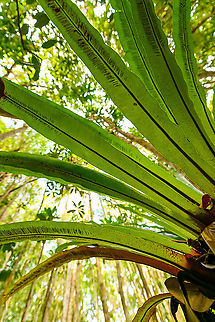
Appearance
''Asplenium nidus'' forms large simple fronds visually similar to banana leaves, with the fronds growing to 50-150 cm long and 10-20 cm broad. They are light green, often crinkled, with a black midrib, and exhibit circinate vernation. Spores develop in sori on the underside of the fronds. These sori form long rows extending out from the midrib on the back of the outer part of the lamina . The fronds roll back as they brown and create a massive leaf nest in the branches and trunks of trees.
Distribution
''Asplenium nidus'' is native to east tropical Africa ; temperate and tropical Asia ; and in Australasia
Habitat
''Asplenium nidus'' can survive either as an epiphytal, or terrestrial plant, but typically grows on organic matter. This fern often lives in palm trees or bromeliads, where it collects water and humus in its leaf-rosette. It thrives in warm, humid areas in partial to full shade.
Uses
Plants named ''Asplenium nidus'' are commonly sold as house plants, though most of the specimens in the horticultural trade are not ''A. nidus'', but different, but closely related species . Apparently, most plants sold in America as ''A. nidus'' are actually ''Asplenium australasicum''. But ''A. australasicum'' differs from ''A. nidus'' by having longer sori, and a differently shaped midrib.''Asplenium nidus'' has been used locally in folk medicine and hygienically to treat halitosis.
This plant has gained the Royal Horticultural Society's Award of Garden Merit.
The sprouts of ''A. nidus'' are eaten as a vegetable in Taiwan.
In Taiwan this plant is called 山蘇 and typically cut into inch length pieces and fried with garlic and chilli peppers.
References:
Some text fragments are auto parsed from Wikipedia.
